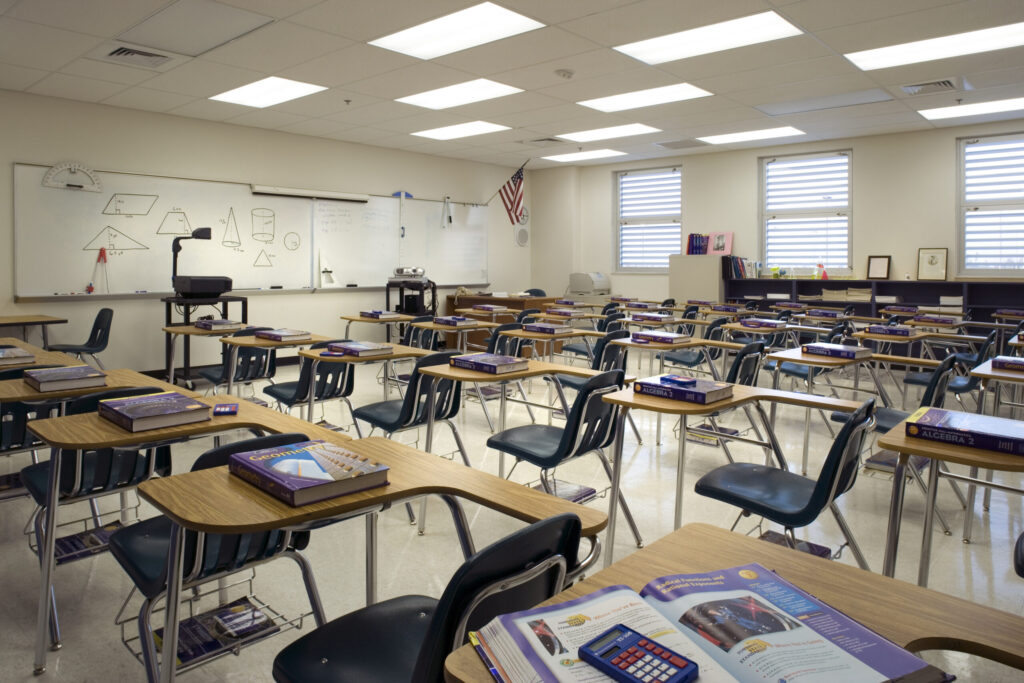Chronic Absenteeism rates in Iowa schools are on the rise compared to pre-pandemic rates. (Photo by Dan Forer/Getty Images)
One in four Iowa students was chronically absent from school during the 2021-22 school year, according to a new report from the Annie E. Casey Foundation.
Officials hope a tiered approach to the problem will encourage schoolwide attendance and remove any barriers to attendance. They also hope additional investments in Iowa schools will counter the growing trend.
Executive Director of Student Services at Dubuque Community School District Shirley Horstman said her district uses a three-tiered approach to improve attendance schoolwide.
The first tier is aimed at all students and encourages schools to lay out a clear school schedule, recognize good attendance and establish the benefits of attendance.
The second tier is for students absent for 5% to 10% of the school year. Schools will reach out to the parents of those students and look for ways to remove any obstacles to regular class attendance.
If it’s a transportation issue, the school may help the parents set up a local carpool, teach students how to use city buses or recommend having an older sibling walk them to school, according to Horstman.
The third tier is for chronically absent students who miss more than 10% of school days. For those students, schools will set up a more formal conversation with parents and create an attendance agreement outlining joint efforts to improve attendance.
Missing that much school puts students at an educational disadvantage, said Anne Fischer, executive director of Common Good Iowa, which helped with the report. “Once you get behind, it’s hard to get caught up,” she said.
Fischer said chronic absenteeism rates have grown across the nation since the pandemic. Iowa’s rate of chronic absenteeism of 26% is better than the national average of 30%, but both rates are still higher than the pre-pandemic national average of 16%.
Fourth-grade students who never missed a day of school scored proficient or above proficient in reading 40% of the time compared to 14% for students who missed ten or more days, according to the report.
SUPPORT NEWS YOU TRUST.
It’s not just grades that are impacted by constant absences, Fischer said. A 2012 John Hopkins University study tracking Rhode Island students for seven years found that chronically absent students were more than twice as likely to get suspended or repeat a grade.
The increasing absenteeism rates negatively affect those who regularly attend class as well. Students in high-absence classrooms are more likely to have lower test scores, according to the report.
Horstman said when teachers have multiple chronically absent students, they are forced to repeat old material, create make-up assignments and spend more time trying to catch students up.
With more funding, Horstman said districts like hers could do at-home visits to discover any barriers to attendance and remind students of the importance of attendance.
“If we could do home visits to [chronically absent] students at the beginning of the year and welcome them and let them know we want them here, that’s something that I think could really move the needle,” Horstman said. “And that’s a funding issue and it’s also a staffing issue.”
Hedy Chang, executive director of Attendance Works, said addressing chronic absenteeism means addressing the causes behind it.
“When kids are not in school it’s usually a sign that something’s going on that we need to address. We need to not blame kids and families, but we need to understand why and then when we understand why, we can come up with solutions,” Chang said.
Students who experience instabilities at home such as divorce, domestic violence or substance abuse are more likely to be chronically absent, according to the report. Students facing such issues are also more likely to repeat a grade and be indifferent to succeeding academically.
Chang praised the Iowa Department of Education for making school-absence data available for all Iowa school districts as it allows them to keep better track of student attendance numbers across the state.
The state agency also provides grants to schools to help them address chronic absenteeism, according to Heather Doe, spokesperson for the Iowa Department of Education.
Fischer said greater investments in Iowa schools are needed to counteract the growing tide of chronic absenteeism.
“At a time when costs have been rising faster and when students’ needs have been rising faster, we’re not prioritizing our schools in ways that we used to and so maybe it’s not surprising that we’re starting to see a little sign of erosion,” Fischer said.
GET THE MORNING HEADLINES DELIVERED TO YOUR INBOX
The post 1 in 4 Iowa students are chronically absent from school appeared first on Iowa Capital Dispatch.

